ChemSpider none | ||
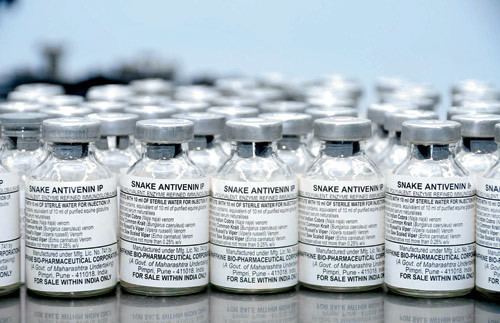 | ||
Synonyms snake antivenin, snake antivenene | ||
Snake antivenom, also known as snake venom antiserum and antivenom immunoglobulin is a medication made up of antibodies used to treat snake bites by poisonous snakes. It is a type of antivenom.
Contents
- Production
- Regulations
- Monovalent vs polyvalent
- Antibody composition
- Cross neutralization properties
- Families of venomous snakes
- References
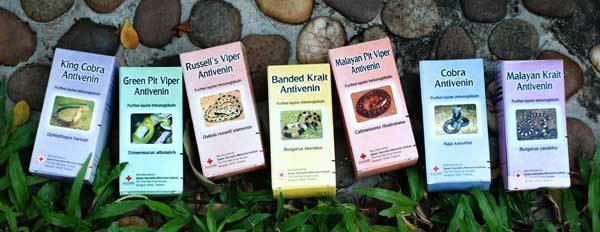
It a biological product that typically consists of venom neutralizing antibodies derived from a host animal, such as a horse or sheep. The host animal is hyperimmunized to one or more snake venoms, a process which creates an immunological response that produces large numbers of neutralizing antibodies against various components (toxins) of the venom. The antibodies are then collected from the host animal, and further processed into snake antivenom for the treatment of envenomation.

They are on the World Health Organization's List of Essential Medicines, the most important medications needed in a basic health system.

Production
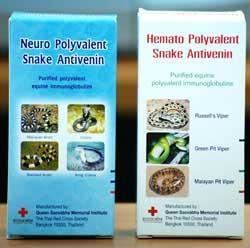
Antivenoms are typically produced using a donor animal, such as a horse or sheep. The donor animal is hyperimmunized with non-lethal doses of one or more venoms to produce a neutralizing antibody response. Then, at certain intervals, the blood from the donor animal is collected and neutralizing antibodies are purified from the blood to produce an antivenin.
Regulations
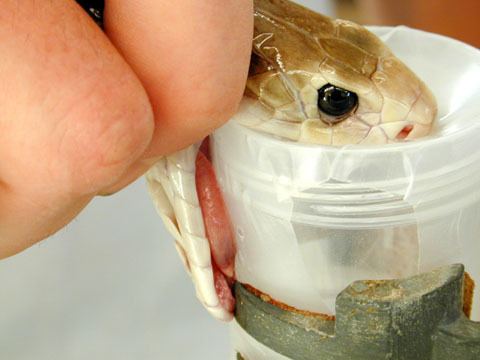
Monovalent vs. polyvalent

Snake antivenom can be classified by which antigens (venoms) were used in the production process. If the hyperimmunizing venom is obtained from a single species, then it is considered a monovalent antivenom. If the antivenom contains neutralizing antibodies raised against two or more species of snakes, then the composition is considered polyvalent.
Antibody composition
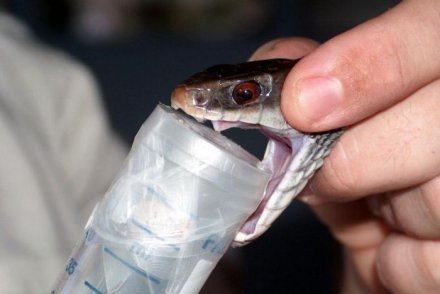
Compositions of the antivenom can be classified as whole IgG, or fragments of IgG. Whole antibody products consist of the entire antibody molecule, often immunoglobulin G (IgG), whereas antibody fragments are derived by digesting the whole IgG into Fab (monomeric binding) or F(ab')2 (dimeric binding). The fragment antigen binding, or Fab, is the selective antigen binding region. An antibody, such as IgG, can be digested by papain to produce three fragments: two Fab fragments and one Fc fragment. An antibody can also be digested by pepsin to produce two fragments: a F(ab')2 fragment and a pFc' fragment. The fragment antigen-binding (Fab fragment) is a region on an antibody that binds to antigens, such as venoms. The molecular size of Fab is approximately 50kDa, making it smaller than F(ab')2 which is approximately 110kDa. These size differences greatly affect the tissue distribution and rates of elimination.
Cross neutralization properties
Antivenoms may also have some cross protection against a variety of venoms from snakes within the same family or genera. For instance, Antivipmyn (Instituto Bioclon) is made from the venoms of Crotalus durissus and Bothrops asper. Antivipmyn has been shown to cross neutralize the venoms from all North American pit vipers. Cross neutralization affords antivenom manufacturers the ability to hyperimmunize with fewer venom types to produce geographically suitable antivenoms.
Families of venomous snakes
Over 600 species are known to be venomous—about a quarter of all snake species. The following table lists some major species.
